Abbas Abad Historical Complex
The Abbas Abad Historical Complex is one of the most memorable and historic sites in the Mazandaran province.
Situated 9 kilometers southeast of Behshahr, the Abbas Abad Garden is nestled among the dense forests on the slopes of the Alborz mountain range.
This garden is one of Iran's most valuable and prestigious historical gardens and has been recognized as a UNESCO World Heritage site due to its rich historical significance.
The Abbas Abad garden complex includes an array of fascinating structures and natural features such as the Abbas Abad Dam, its reservoir and lake, the Abbas Abad Flower Garden, the Abbas Abad Palace, a historic bathhouse, a watermill, and two brick towers.
History of Abbas Abad Garden
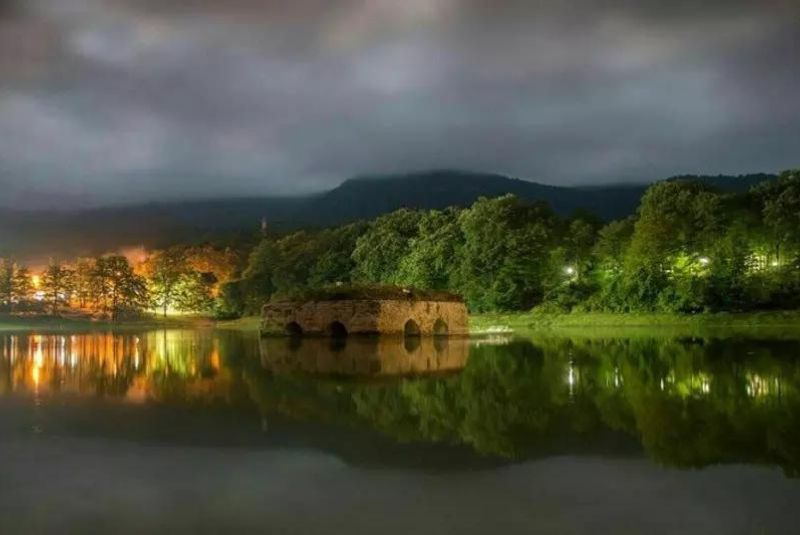
Abbas Abad Garden has long been renowned throughout history. In the past, it was also known by the name "Ashraf al-Belad." This name originated because Shah Abbas I's mother was from Behshahr, and due to the area’s pleasant climate and numerous attractions, he named the site after his mother, Ashraf al-Muluk.
The Abbas Abad Garden was constructed by order of Shah Abbas I, placing its origins in the Safavid era. Its current name, Abbas Abad Garden, was reinstated to honor its Safavid roots and its creation under Shah Abbas I. The garden spans an impressive 600 hectares, featuring a rich diversity of plant and tree species, making it one of the largest non-desert gardens in Iran.
Due to its varied vegetation and dense trees, visitors can stroll for hours in the pristine and lovely forest of Abbas Abad Garden, capturing every moment through photos and videos.
The design of the Abbas Abad Garden, with its lush greenery, was based on precise and creative angling. Ingenious and appropriate engineering solutions for complex water management systems further enhanced the garden's reputation.
This has led to Abbas Abad being famously known as the "Chahar Bagh Garden"(four-part garden) symbolizing the pinnacle of Persian garden design and ingenuity.
| Related: Why Explore Iran's Ecotourism Wonders
Sections of the Abbas Abad Historical Complex
The Abbas Abad Historical Complex comprises various sections, some of which have not survived. Here, we introduce its main components:
Abbas Abad Lake

Abbas Abad Lake is a natural lake covering over 10 hectares, with water levels reaching up to 18 meters when fully filled. At its center lies a brick structure with four arches, which once supported a wooden and tiled roof.
When the dam is filled, the structure becomes submerged, with only its top visible above the water like an island. Remarkably, there are no brick steps leading to or around the structure.
The lake's water is sourced from melted winter snows, collected through channels and used in summer to irrigate rice paddies and supply nearby villages.
| Related: Iran’s Top 10 Seas and Lakes to Explore
Abbas Abad Garden
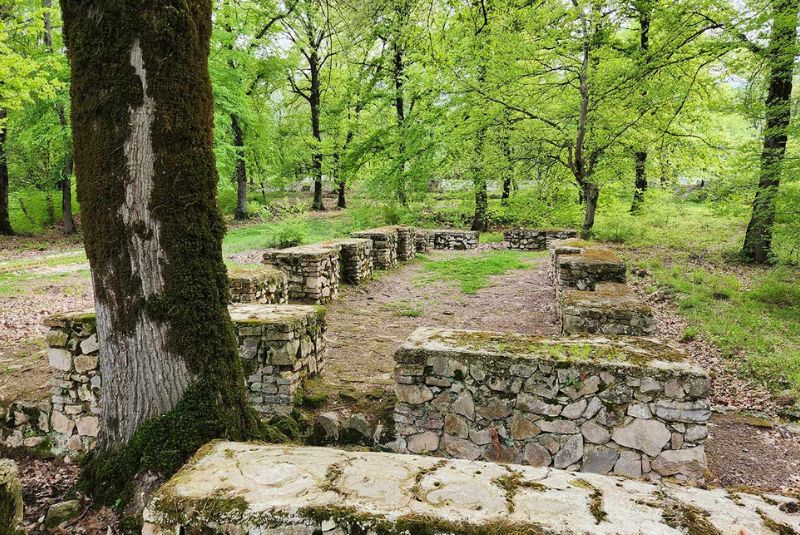
Situated on a natural hill, the historical garden was constructed by Safavid engineers who terraced the hill to create a multi-leveled garden. This garden, noted for its symmetrical design, is one of the most unique Persian gardens.
The engineers used slopes and clay pipes to create the sound of flowing water, adding to the tranquility of the garden. The garden's design principles were so influential that they inspired the layout of other famous gardens like the Taj Mahal and the Alhambra.
Abbas Abad Dam
The Abbas Abad Dam, with a capacity of 600,000 cubic meters, is a reservoir dam built during the Safavid era and registered as a historical monument by Iran's Cultural Heritage Organization.
Constructed from stone, brick, and mortar, the dam features three outlet gates and a buttress that functions both as a support and a water discharge channel.
The reservoir's water is sourced from nearby springs, and the dam's design includes a tunnel that redirects water pressure away from the dam walls, reducing the risk of damage.
The Palace
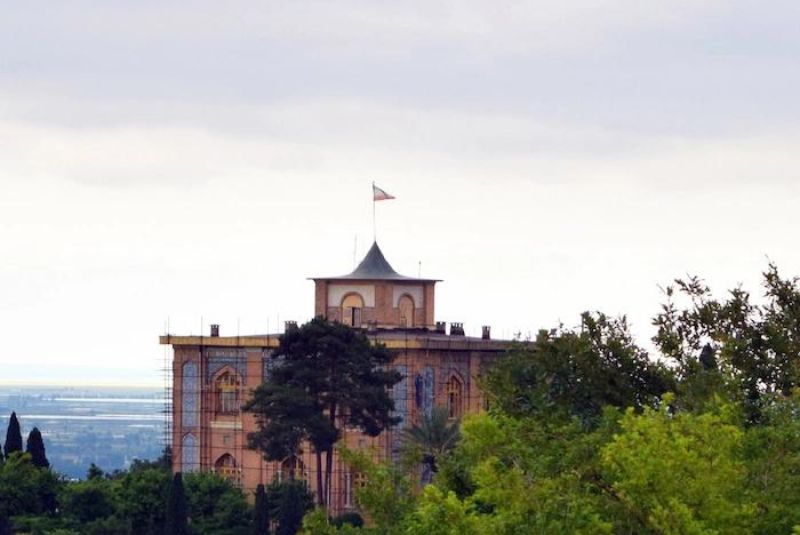
Approximately two kilometers north of the garden, remnants of a Safavid-era architectural structure were discovered on a hill overlooking the Behsher plain and the Miankaleh Gulf.
The discovery of glazed roof tiles suggests that this site was the location of a royal palace, although no architectural remains of the palace have been found in the main garden area during archaeological excavations.
| Also read about: Tehran's Most Famous Palaces
Bathhouse
Attached to the western side of the garden, at a lower level, lies a historical bathhouse covering 160 square meters. The bathhouse features a domed roof and is constructed primarily of brick, adorned with tile decorations and mortar.
Water was supplied through clay pipes from the eastern side, circulating through the building to fill hot water reservoirs and the various basins in the bathing area. This intricate water system provided both hot and cold water to different sections of the bathhouse, highlighting its historical significance.
| Related: Persian Hammams - Top Traditional Persian Bathhouses
Warm Room (Garmkhaneh)
The warm room served as the bathing and washing area, located in the southeastern part of the bathhouse. Archaeological findings reveal that it contained multiple basins, emphasizing hygiene and individual use rather than communal baths. The room was decorated with colorful glazed tiles, adding to its aesthetic appeal.
Golbagh (Flower Garden)
The Golbagh, or water distribution station, is situated 600 meters from the main garden. This area was flattened to create a level surface where spring water would flow through multiple basins for purification before being channeled to the main garden. Covering an area of about 3500 square meters, the Golbagh was guarded due to its importance in the water supply system.
Brick Towers
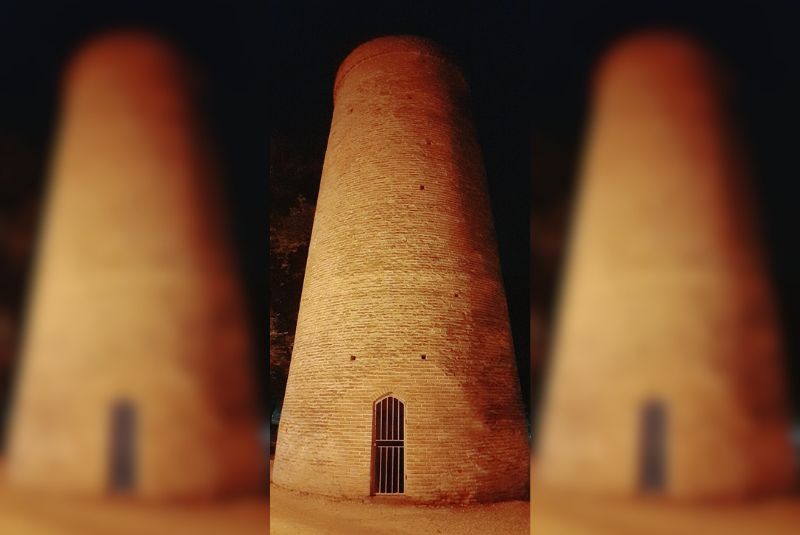
Two brick towers, each seven meters in diameter and 14 meters high, remain from the Safavid era. Built with mortar and bricks, these towers were not only guard posts but also part of the water management system, designed to prevent hydraulic shocks from damaging the water channels.
Water Mill
Located about five kilometers south of the garden, the water mill was built between two rivers. Constructed from stone, brick, and mortar, the mill utilized the flow of water directed through covered and open brick channels to turn its wheels. Safavid engineers maximized the use of water energy to operate the mill efficiently.
| Read more: Iran's Windmills - Ancient Windmills in Iran
Facilities at the Abbas Abad Historical Complex
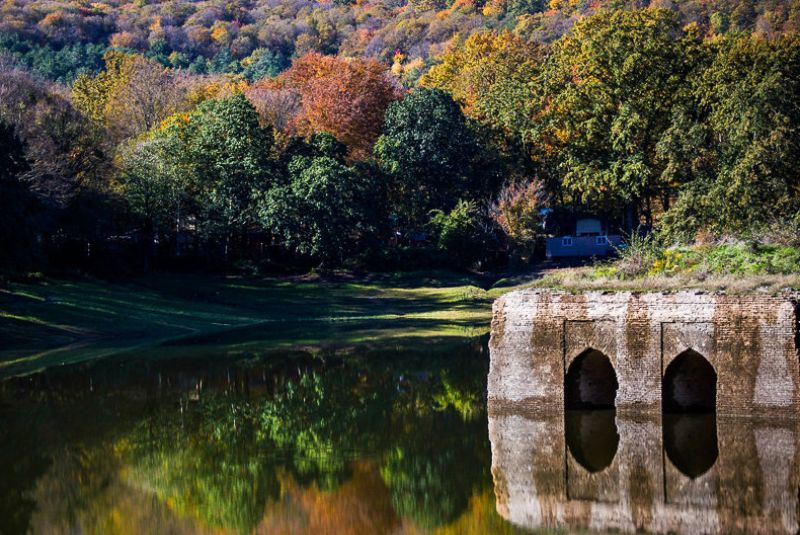
The Abbas Abad Historical Complex offers a variety of amenities, including:
- Cafe
- Restaurant
- Restrooms
- Prayer Room
- Food Store
- Pedal Boat Rentals
| Suggestion: Top 10 Forests and Jungles of Iran
Best Time to Visit Abbas Abad Historical Complex
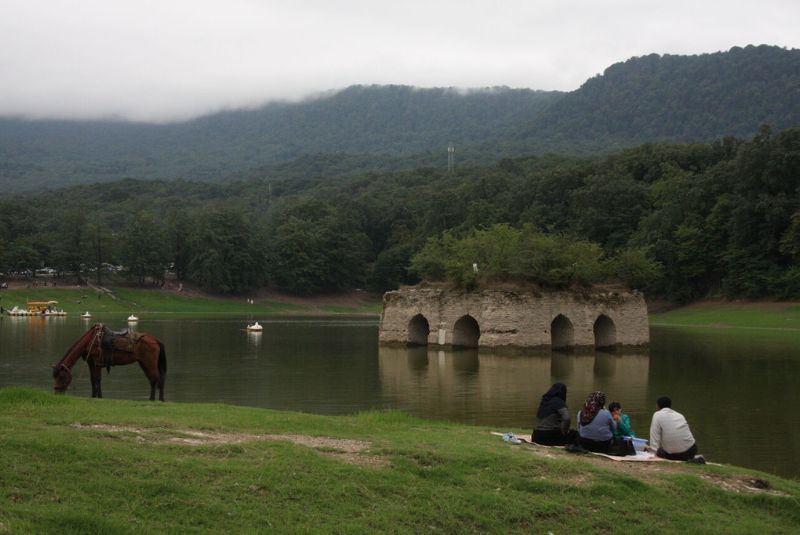
The best season to visit the Abbas Abad Historical Complex, due to its pleasant weather, is spring. In autumn, the weather around the lake can be somewhat cold, but the breathtaking view of falling leaves and the reflection of autumn in the lake’s water is worth enduring the chill.
| Also read about: The Most Famous Caves of Iran
Accommodation During Visits to the Complex
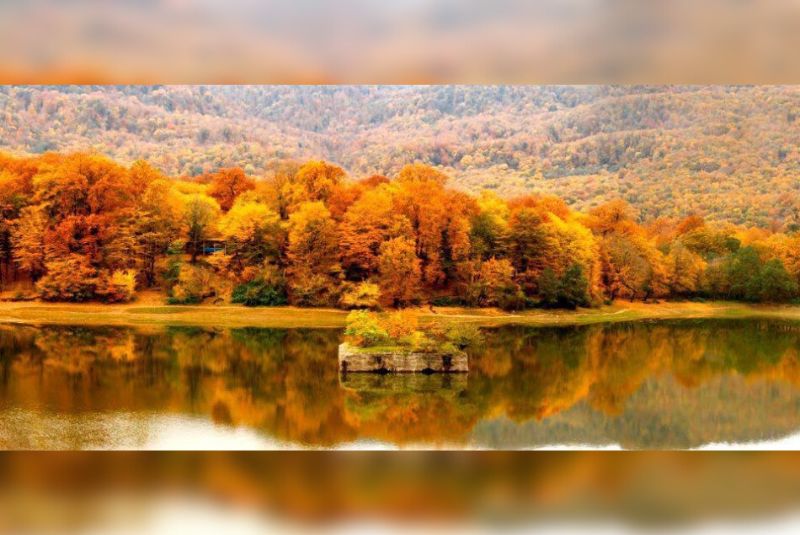
If you plan to stay overnight near the Abbas Abad Complex, there are designated areas within the complex for camping. Additionally, there are eco-lodges such as Gol-o-Bolbol, Kumeh, and Amarat Madari, located 5 to 17 kilometers from the complex.
Visiting Hours and Tickets for Abbas Abad Complex
The complex is open from 8 AM to 6 PM. The entrance fee is 5,000 tomans for Iranian visitors and 50,000 tomans for foreign visitors.
Location of Abbas Abad Complex
Abbas Abad Historical Complex is located on the slopes of Alborz Mountains, 9 km from Behshahr city in Mazandaran province.
How to Get to Abbas Abad Complex
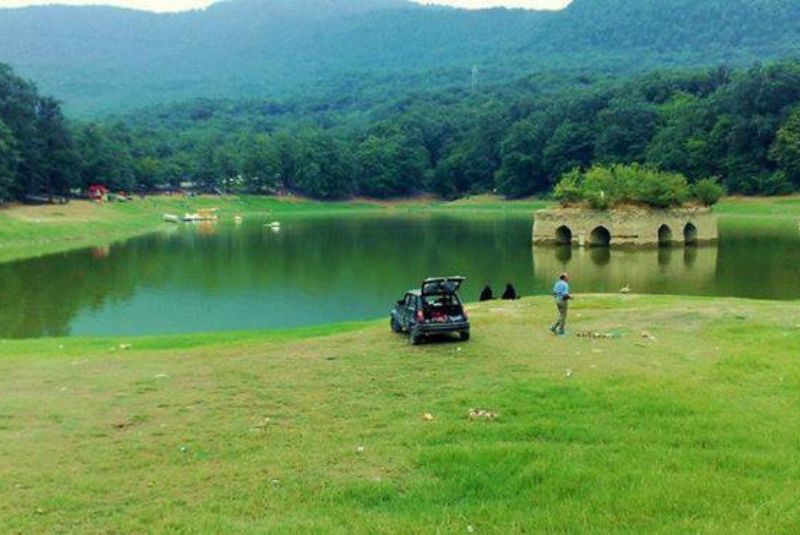
If you are traveling from Tehran, enter the Haraz Road and follow the route towards Amol Road. In the outskirts of Amol, there is an exit on the right side leading towards Babol, Qaemshahr, and Sari. Take this exit and continue the route until you reach Behshahr after Sari.
Upon entering Behshahr, enter Hasheminejad Boulevard and continue until you reach Imam Reza Boulevard. In Imam Reza Boulevard, just before Abbaspour Hotel, there is an entrance to Abbas Abad Road on your right side. Enter the road and continue past the Qasr Restaurant. At the end of the road, there is an exit on the right side directly leading to the Abbas Abad Complex.
| Read more: Cloud Forest in Iran - A Rare Phenomenon
Tourist Attractions Near Abbas Abad Complex
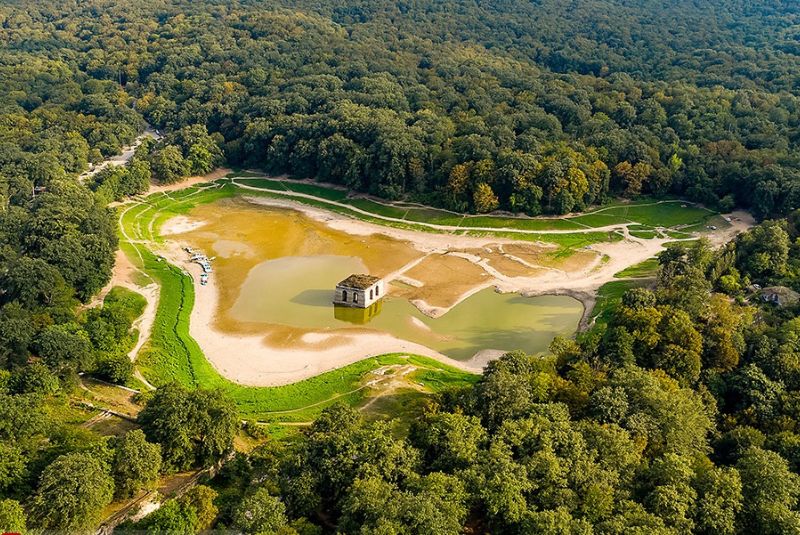
Exploring the surroundings of the Abbas Abad Historical Complex can enhance your journey by visiting other attractions in Mazandaran. These attractions include:
1. Espahbod Waterfall
Espahbod Waterfall, near Behshahr and the Abbas Abad Garden, is a unique waterfall characterized by its seven-tiered limestone pool structure, cascading like a staircase. Its source originates from mountain springs called Siakhani, ultimately flowing into the Neka River.
2. Forty-Column Park (Bagh-e Chehel Sotoun Ashraf)
Also known as the National Park or Shah's Garden, this park offers lush greenery and pleasant weather. It's one of Iran's national treasures dating back to the Safavid era.
| Read more: Iran's Top 14 National Parks Every Tourist Should Visit
3. Amaret Palace Garden
During the Safavid era, the Amaret Palace Garden served as a valuable water supply structure adorned with beautiful paintings and tile works. Although it once had two floors, only the ground floor and part of the first floor remain today. Located in Behshahr, Hasheminejad Boulevard, Pasdaran Street, next to the water and sewage.
4. Safiyabad Palace
Near the Abbas Abad Garden, Safiyabad Palace is a historical mansion and one of the prominent tourist attractions in Behshahr. It received significant attention during the reign of Shah Safi, the son of Shah Abbas.
Despite suffering damage from fires and Afghan invasions over the years, parts of it have been preserved, especially during the reign of Nader Shah Afshar and Reza Shah Pahlavi.
| Also read about: Top 12 Beautiful Iranian Villages that WOW You
Tips for Visiting Abbas Abad Historical Complex
- Wear Comfortable Shoes: When exploring the Abbas Abad Historical Complex in Behshahr, make sure to wear suitable walking shoes to easily navigate through all its sections.
- Dress Appropriately: If you visit the Abbas Abad Complex during summer, wear light clothing to avoid discomfort from the hot weather. Additionally, don't forget to bring a hat and sunglasses to protect yourself from the sun. It's preferable to visit the complex before sunrise or after sunset during this season to enjoy cooler weather.
Bottom Line
The Abbas Abad Historical Complex in Mazandaran province stands as a magnificent testament to Iran's rich cultural heritage and natural beauty.
Nestled amidst the lush forests of the Alborz mountain range, this UNESCO World Heritage site boasts a diverse array of historical structures and natural wonders. From the tranquil Abbas Abad Lake to the meticulously designed gardens and architectural marvels, every corner tells a story of Iran's illustrious past.
Share your story!
Comment below and let us know about your Experience.
Your story inspires others!


Comment
Leave a Comment